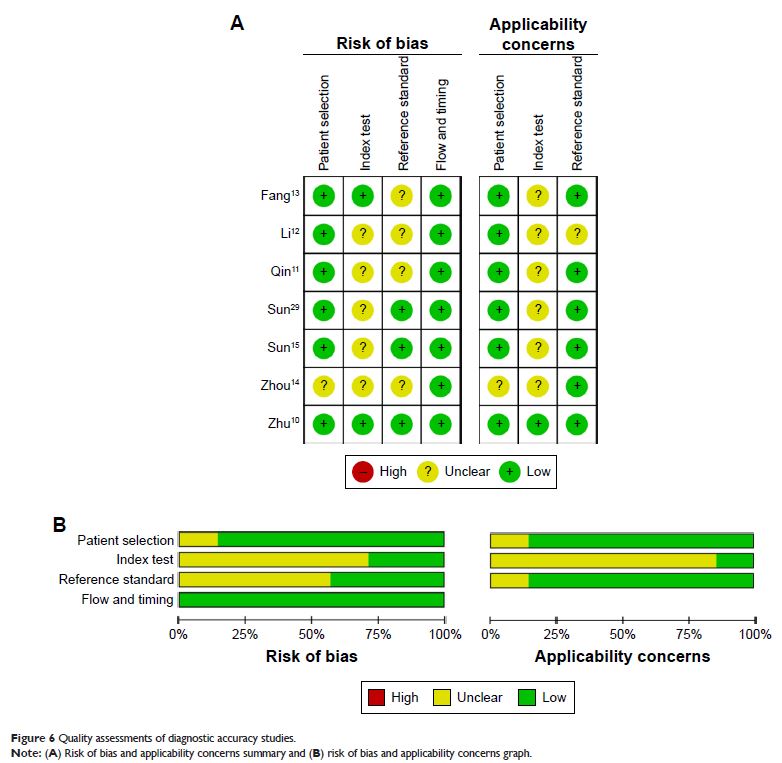108605
论文已发表
注册即可获取德孚的最新动态
IF 收录期刊
- 3.4 Breast Cancer (Dove Med Press)
- 3.2 Clin Epidemiol
- 2.6 Cancer Manag Res
- 2.9 Infect Drug Resist
- 3.7 Clin Interv Aging
- 5.1 Drug Des Dev Ther
- 3.1 Int J Chronic Obstr
- 6.6 Int J Nanomed
- 2.6 Int J Women's Health
- 2.9 Neuropsych Dis Treat
- 2.8 OncoTargets Ther
- 2.0 Patient Prefer Adher
- 2.2 Ther Clin Risk Manag
- 2.5 J Pain Res
- 3.0 Diabet Metab Synd Ob
- 3.2 Psychol Res Behav Ma
- 3.4 Nat Sci Sleep
- 1.8 Pharmgenomics Pers Med
- 2.0 Risk Manag Healthc Policy
- 4.1 J Inflamm Res
- 2.0 Int J Gen Med
- 3.4 J Hepatocell Carcinoma
- 3.0 J Asthma Allergy
- 2.2 Clin Cosmet Investig Dermatol
- 2.4 J Multidiscip Healthc

DJ-1 的过度表达与侵袭性临床病理特征和恶性肿瘤预后不良有关:一项综合分析
Authors Wang Q, Li F, Shi W, Zhang Q, Wang J, Yan X, Chai L, Li M
Received 9 January 2018
Accepted for publication 9 May 2018
Published 9 July 2018 Volume 2018:11 Pages 3931—3942
DOI https://doi.org/10.2147/OTT.S162045
Checked for plagiarism Yes
Review by Single-blind
Peer reviewers approved by Dr Colin Mak
Peer reviewer comments 2
Editor who approved publication: Dr William Cho
Purpose: A number of studies have investigated the role of DJ-1 in the
development and progression of malignant tumors. This meta-analysis aims to
systematically estimate the relationship between the expression level of DJ-1
and the malignant biological behaviors of tumors and to assess the clinical
significances of DJ-1 in the prognosis and diagnosis of cancer.
Materials and
methods: We searched PubMed, Web of Science,
China National Knowledge Infrastructure and Wanfang databases from inception to
December 1, 2017. Pooled odds ratio (OR) and hazard ratio (HR) with their 95%
confidence interval and the diagnostic value of DJ-1 were calculated.
Results: Fourteen eligible studies with a total of 1,947 subjects were
enrolled in our meta-analysis. The results showed that DJ-1 was overexpressed
in cancer patients compared with noncancer patients (OR = 30.72), and elevated
expression of DJ-1 was demonstrated to be closely associated with high
tumor-node-metastasis stage (OR = 5.52), poor differentiated degree (OR =
2.46), positive lymph node metastasis (OR = 4.12) and worse overall survival
(HR = 2.23). In addition, the combined sensitivity and specificity for DJ-1 to
discern malignant tumors were 0.73 and 0.93, respectively. The diagnostic OR
was 34.87, and the area under the summary receiver operating characteristic
curve was 0.88.
Conclusion: This meta-analysis demonstrated that DJ-1 was an important
biomarker in tumor assessment and prognosis prediction.
Keywords: DJ-1, prognosis, diagnosis, malignant tumor, meta-analysis
